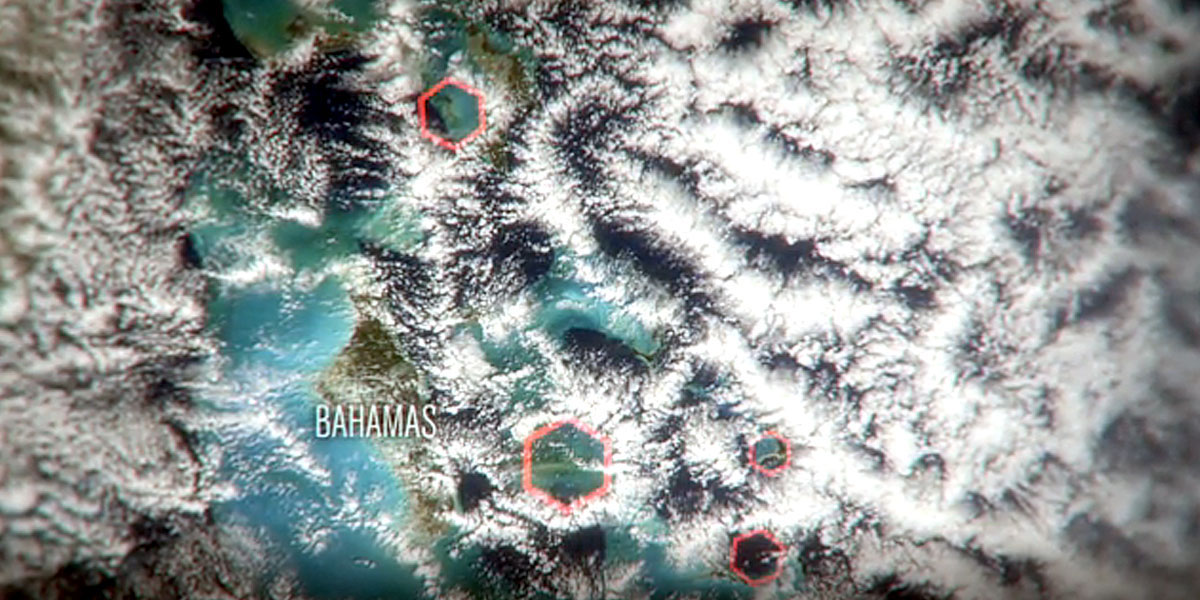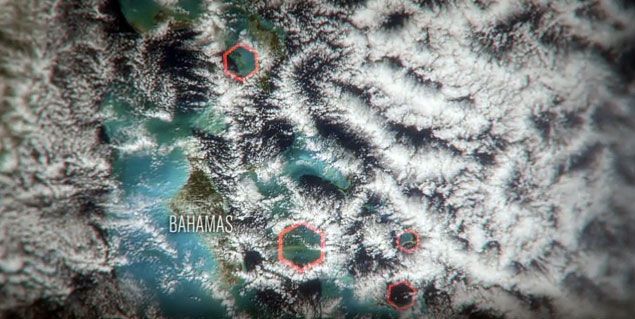

Have scientists figured out the mystery of the Bermuda Triangle? That’s the claim that is going viral on the internet following the discovery of strange, hexagonal clouds at the western tip of the triangle.

According to a Science Channel documentary, the clouds were captured by satellites over the Bahamas peaking meteorologists’ interest. The shape of the clouds appeared to have straight edges which, meteorologists say, is not normal.
“You don’t typically see straight edges with clouds,” Dr. Steve Miller, satellite meteorologist at Colorado State University, said. “Most of the time, clouds are random in their distribution.”
The clouds, measuring between 20 and 50 miles across, have also been found in the North Sea in Europe and are believed to create “air bombs,” formed by microbursts of air that blast out of the bottom of the cloud and hit the ocean creating massive waves and sea-level winds at up to 170 mph.
not the case.”
NBC meteorologist Kevin Corriveau didn’t even seem convinced that the clouds seen in the Bahamas would create “air bombs.”
“When I look at a hexagonal cloud shape in the Bahamas, this is not the cloud signature of what a microburst looks like,” he told NBC News. “You would normally have one large to extremely large thunderstorm that wouldn’t have an opening in the middle.”
Rather, he said, the odd shapes could be due to the small islands of the Bahamas heating the air differently than the long coastline of Florida, creating erratic weather patterns.
The Bermuda Triangle—a region of ocean bordered by Florida, Bermuda and Puerto Rico—has gained notoriety over the past century as the location many ships and aircrafts reportedly disappear without a trace.
Violent weather has been blamed for mysterious disappearances in the Bermuda Triangle before, along with other explanations ranging from compass problems, the Gulf Stream, methane hydrates that can reduce the density of the water and sink ships, and even paranormal activity.
While this theory adds to the discussion, there is still much more to learn about its occurrence and effect in the area of the Bermuda Triangle.

 233k
233k  41k
41k  Subscribe
Subscribe 